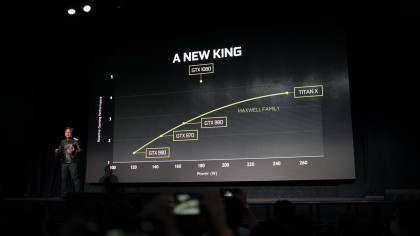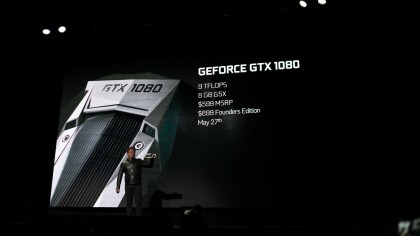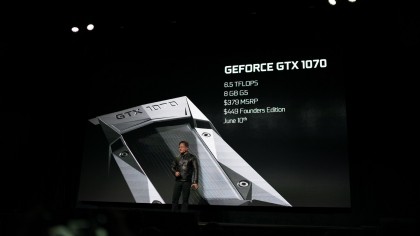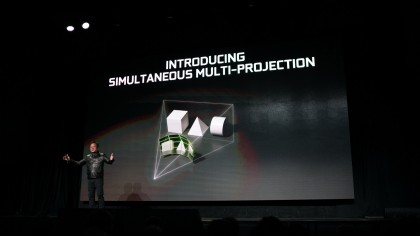
After a mountain of rumors and a big revealing leak, Nvidia's next generation Pascal graphics cards are here at long last.
Nvidia pulled the wrap off two graphics cards, introducing the GTX 1080 and GTX 1070 to replace the current generation of Maxwell cards that rocked the 2015 PC gaming world. Jen-Hsun Huang, co-founder of Nvidia, explained the Pascal GPUs took over two years of development and over a billion dollars invested in research.
The new GTX 1080/1070 cards utilize Nvidia's new 16nm FinFET process and GDDR5X video memory, supplanting the GDDR5 memory standard used in all modern GPUs. Despite all the power behind it, the Nvidia GTX 1080 still sips power at only 209mV of electricity.

But that's just the tip of the iceberg as Huang claims the Nvidia GTX 1080 is faster than a pair of GTX 980s in SLI configuration and even a single Nvidia GTX Titan X. In fact, the GTX 1080 offers twice the performance and three times the efficiency of Nvida's flagship card thanks to nine teraflops of performance.
Nvidia announced the GeForce GTX 1080 will be available starting May 27 for $599 (about £415, AU$813) There will also be a special Founders edition priced at $699 (about £484, AU$949).
In another surprise, Nvidia also announced the Nvidia GTX 1070 – which is also faster than the Titan X – will be available starting June 10 for $379 (about £263, AU$514) and a founders edition for $449 (about £311, AU$610).


Aside from the new graphics hardware, Nvidia also announced VR Audio works for a more immersive sound space. Huang explained the new addition to Nvidia VRWorks API will allow developers to introduce a new level of realism as gamers will be able to track gunshots by simply hearing them.
Get daily insight, inspiration and deals in your inbox
Sign up for breaking news, reviews, opinion, top tech deals, and more.

Multi-monitor enhanced
Huang also broached another problem in the gaming world in which most games displayed on a multi-monitor setup is actually a 3D game world projected into a 2D image. The underlying problem is the fact that the game world isn't rendered with the right depth or perspective, unless users have multiple graphics cards to drive the experience correctly.
The Nvidia GTX 1080, however fixes this problem by being powerful enough to do the work of multiple GPUs and correctly renders these multiple perspectives.
Huang called the technology simultaneous multi-projection and it can capture the game world through 16 view points and project them independently for both multi-display setups and VR headsets.
There are also benefits for gamers without multi-monitor setups. Nvidia's technology will lower the graphics quality around the edges of the frame, so that the GPU can render a silky smooth 60fps experience.
- Here's how Nvidia is introducing pro-photography into the video game worlofd
Kevin Lee was a former computing reporter at TechRadar. Kevin is now the SEO Updates Editor at IGN based in New York. He handles all of the best of tech buying guides while also dipping his hand in the entertainment and games evergreen content. Kevin has over eight years of experience in the tech and games publications with previous bylines at Polygon, PC World, and more. Outside of work, Kevin is major movie buff of cult and bad films. He also regularly plays flight & space sim and racing games. IRL he's a fan of archery, axe throwing, and board games.
